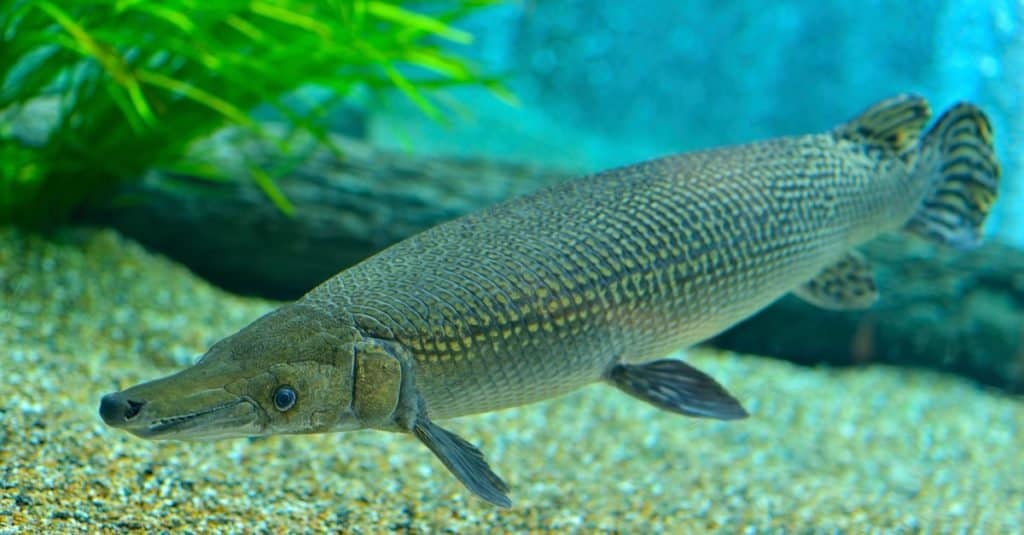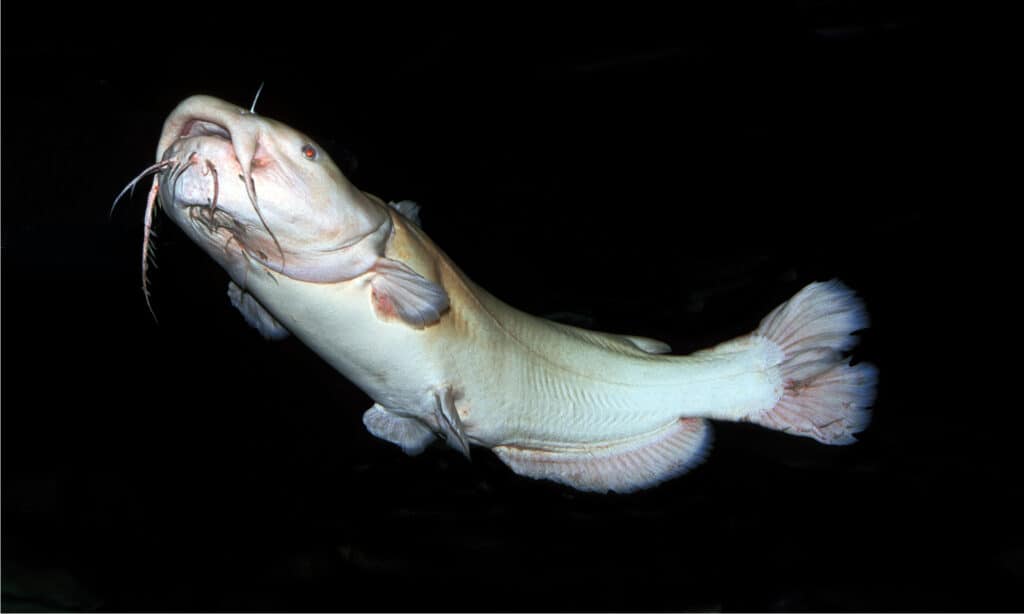The Missouri River is the longest river in the United States (2,341 miles long), and it is home to a variety of interesting marine creatures. This includes some fish so large that they’re considered river monsters! Keep reading to learn more about the largest fish in the Missouri River!

1. Alligator Gar
Alligator gars are considered to be the largest of all the fish in the gar family. They can grow to be up to 6 feet long and weigh over 100 pounds. However, there have been stories of even larger alligator gars existing out there. For instance, one of the largest alligator gars ever caught was actually found in the Mississippi River, which is connected to the Missouri River. This river monster, caught on February 14, 2011, was over 8 feet long and weighed 327 pounds. If you’re interested in seeing one of the largest fish in the Missouri River in person, you can find this specimen at the Mississippi Museum of Natural Science.
Like other types of gar, the alligator gar is considered a living fossil because of how long it has existed. Some fossil records show alligator gars dating back to 100 million years ago. For reference, dinosaurs only went extinct around 65 million years ago!
Alligator gars get their name from the fact that their appearance is so similar to the American alligator. However, this isn’t the only neat fact about these river monsters. They also have a spiral valve intestine like many different types of sharks. On top of that, they can breathe air — a rare trait in fish!

Alligator gars are named for their resemblance to alligators.
©tristan tan/Shutterstock.com
2. Lake Sturgeon
The lake sturgeon is also known as the rock sturgeon, and it is one of the largest fish in the Missouri River. On average, it can grow to be around 7 feet long and weigh over 240 pounds.
Lake sturgeons have four organs around their mouths called barbels that help them find prey. Not only are these useful for catching a quick meal but tasting it as well. This is because, like our tongues, their barbels have taste buds. Although their large size may make them intimidating, lake sturgeon has no teeth. Instead, they extend their lips to create a vacuum useful for sucking up food whole.
Despite being among the largest fish in the Missouri River, lake sturgeons actually don’t intentionally eat fish. Instead, like whales, they use their specialized mouths to filter feed for small organisms, like larvae, worms, and even leeches! As a result, they’re an important part of the ecosystem — although humans often hunt them for food.

Lake sturgeon is a stellar source of caviar.
©Kletr/Shutterstock.com
3. Flathead Catfish
Flathead catfish are easily among the largest fish in the Missouri River — as well as the rest of the United State’s freshwater systems! Some of their other names include mudcat or shovelhead cat, but this is only a glimpse at the variety of common names surrounding these river monsters.
On average, flathead catfish can grow to be over five feet long. They can also weigh over 100 pounds, but this is just in theory. Regardless, they are actually the second largest catfish in all of North America, right behind the blue catfish (Ictalurus furcatus).
Like the alligator gar, however, one of the largest flathead catfish was caught in Missouri but not the river itself. Instead, Scott L. Brown caught this whopping river monster in Montrose Lake on April 28, 2003. It weighed in at just over 77 pounds — around the same as a small sofa.

The flathead catfish is the second largest species of catfish in North America.
©slowmotiongli/Shutterstock.com
The photo featured at the top of this post is © Fabien Monteil/Shutterstock.com
Thank you for reading! Have some feedback for us? Contact the AZ Animals editorial team.






